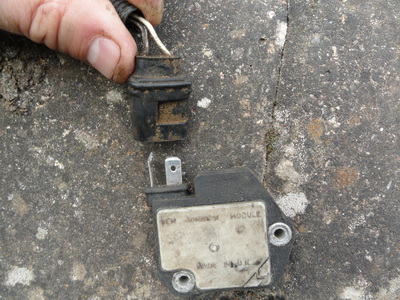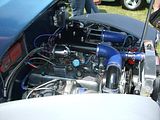thats the old 12v start 9v run system.... from the web .....
The ballast resisted ignition system was - I believe - developed by Ford when they were experiencing poor starting on a certain prodigiously used 4-cylinder engine. To get round the issue of the massive current drain caused by the starter motor functioning, the ballast-resisted system was designed. When you hit the starter button/key, a massive drop in available current to the coil occurs as the starter motor does its thing. The colder the weather or the more worn the starter motor, the more current it draws, the less there is passed to the coil to instigate ignition.
The ballast-resisted system utilises a 6 (commonly called the 'cold start' system) or 9-volt coil instead of the older style 12-volt item. When you hit the starter button/key, the coil is still seeing maximum current so produces a nice, big, fat, 12-volt induced spark to start the engine. Kind of 'super-charging' the coil by increasing the voltage to way above it's normal supply - by some 30%+. When the key is released, the ballast resister ensures the voltage passed to the coil stays at 6 or 9 volts. It also significantly increases points life by massively reducing the EMF contained in the system when the points trigger the ignition system (the spark you see at the points when the open) and therefore the intensity of the 'arc' across the points.
Running a 12-volt coil on a ballast-resisted system will produce a very weak spark - consequently the engine won't run too well. Running a 6 or 9-volt coil on a 12-volt system will produce a healthier spark but will burn the coil out real quick. I messed about with this years ago on my Miglia motor and found a few extra horses when using a 9-volt coil on a 12-volt system, but coil failure was way too rapid to make it economically viable and coil failure time was not pre-determinable so could leave you high and dry in the middle of a race!
Identifying which system your car has is pretty straightforward - I believe generally all Minis from 1984 onwards were fitted with ballast-resisted ignition systems. Identifying if it is ballasted resisted became very much easier on later post-1990 cars as the system used a resisted wire rather than an actual resistor electronic component. The ballasted resisted wire is coloured pink with a green tracer in it and is connected to the coil in place of the old, original white wire. However, the ballast-resistor component equipped models still used the white ignition feed wire to the coil that actually ran the 6-volt coil system. The only truly definite way of discovering which your car has is by testing the voltage at the coil lead feed with the ignition on. 12-volt says it's the old system, 9-volt identifies it as ballast-resisted, 6-volt as the older 'cold start' set-up.
And you must use the correct electronic ignition system to suit your wiring system - otherwise it'll get real expensive to keep replacing blown electronic ignition kits!
http://www.calverst.com/articles/EL-Ign ... ystems.htm









